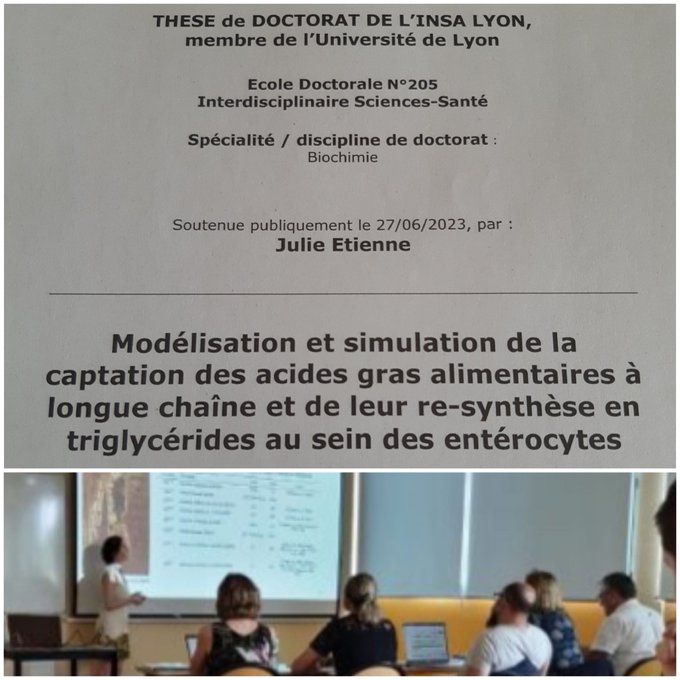The Julie Etienne’s thesis defence, entitled:
“Modeling and simulating the uptake of dietary long-chain fatty acids and
their re-synthesis into triglycerides inside enterocytes”
took place on Tuesday, June 27th, at INSA Lyon, in room Barbara McCLINTOCK located on the ground floor of the building Louis Pasteur
The jury was composed of:
Geneviève Dupont
Patrick Borel
Hédi Soula
Wolfram Liebermeister
Marie-Caroline Michalski (thesis supervisor)
Carole Knibbe (thesis co-supervisor)
Armelle Penhoat


